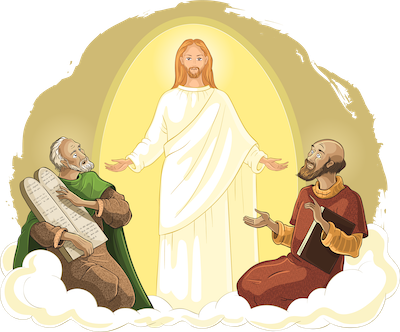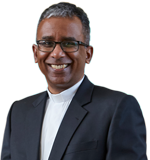
Homily for 17 March
Today as we wend our way through Lent, in our readings we are caught up in stories of hope.
Hope first for Abraham, two thousand years before Christ, an old man and without a future because he has no heir. He has been called by God – a God he doesn’t know too well – to leave his tribe and people and go to a strange land. He does this with faith and hope. And in today’s readings he glimpses glory – God makes a covenant with him – using ancient symbols of fire and blood. God promises him an heir.
We glimpse hope and glory too in the Transfiguration, but it is a hope that has puzzled me for many, many years. The Transfiguration did not make sense to me because I thought it was about giving the disciples a glimpse of the glory of Jesus so that they would not be scandalised by the Cross. But if that was the point of the Transfiguration then it was complete failure. They fled, they abandoned him and hope. They only believed in him again when they saw him after the Resurrection. If the Resurrection changed them what was the point of the Transfiguration?
But in fact they did not suddenly believe in him after the Resurrection. We can think that the first disciples found it easier to believe in the Lord because they saw him after his Resurrection, but seeing the Risen Lord in his glorified body did not suddenly make believers of the disciples. They in fact were confused, disbelieving, afraid, doubtful. The Risen Lord had to lead them to belief in him. He had to talk them through what they were witnessing, help them connect the Resurrection with the Old Testament and also with the events of his life of which they had been part. They needed to come to see that he did everything in obedience to the Father’s will and it was the Father’s will, it truly was the Father’s will that in his flesh he attain the glory that is his only after entering fully into the pain and suffering of the world to heal it from within. Realising this they then believed in him as Lord, the Son of God, Risen from the dead. After the Resurrection, the three witnesses could then tell the story of the Transfiguration and with their brothers and sisters come to believe. Their journey, their struggle is not much different from ours.
We would like to attain glory immediately. We would, like Peter, want to put up three tents and just stay with the glorified Lord. But we listen to this Gospel in the season of Lent and we leave the mountain and live out our faith in lives battered by sin, in a world pummelled by evil. All this was not that different from the experience of the first disciples even after the Lord’s Resurrection. The glory of the Lord we glimpse today shows us that it is not by denying or fleeing the brokenness of the world, that we come to salvation. Jesus walked faithfully, sharing in the brokenness of the world to save us. We are called to live out faith, hope and love in the midst of this world; to live our faith, hope and love in the midst of brokenness, lack of control, at times fear; but faith, hope and love are more real than all the illusions of control which power and wealth offer; the illusion that strong walls keep us safe. Faith, hope and love are the gifts he gives his disciples so we can follow his path to glory.
We need to keep listening and learning that he, he alone, is the fulfilment of our life’s story and journey, of the story of every human being. He is the beginning and the end, the Alpha and the Omega, all time belongs to him, and all ages. To him be glory for ever an ever. Amen.

